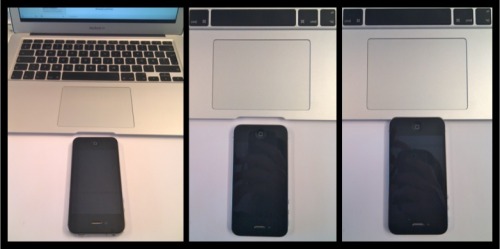On April 1, 1976, Steve Jobs, Steve Wozniak and Ronald Wayne established a small company to sell personal computer kits hand-built by Wozniak. That company, as you probably know, was Apple Computer.
Thirty-five years later, Apple is now the most valuable technology company in the world. Its market capitalization exceeds $317 billion, trumping longtime rival Microsoft by more than $100 billion. And Apple’s iconic products sit on the desks and in the pockets of millions of people across the world.
Most people know bits and pieces of the Apple story, but the company has a complicated history. Some of us may not know, for example, that Apple had a third co-founder, Ronald Wayne, who got cold feet and sold his 10% stake in Apple less than two weeks later. Everybody knows Steve Jobs, but they may not know Mike Markkula, one of Apple’s first angel investors and the company’s second CEO.
In the 35 years of Apple’s existence, the company has gone through hell and back. The launch of the Macintosh in 1984 and the coinciding “1984″ Super Bowl commercial remain symbols one of Apple’s highest points, but only a year later, then-CEO John Sculley forced Steve Jobs out of the company. A decade later, in 1996, the company was on the brink of destruction when it acquired NeXT and brought Steve Jobs back. In 1997, Microsoft invested $150 million in Apple to keep it afloat (something it probably now regrets), and soon after came Apple’s golden years with the iPod, iMac, MacBook, iPhone and now the iPad.
We don’t necessarily want to dwell on Apple’s past; you can visit Wikipedia if you want a lesson in Apple Inc.’s history. Instead, let’s focus on what Apple might do in the next 35 years.
What’s In Store For The Next 35 Years?
For the last 35 years, Apple has almost always been the underdog. While it languished, Microsoft flourished. In fact, Apple surpassed Microsoft in market cap for the first time last May.
For the next few decades, however, the technology titan will be incumbent. Apple has a giant target on its back, and it’s not just Microsoft taking aim. Apple also faces challenges from Google, Amazon and a plethora of mobile device manufacturers. While Apple is handily beating its competition today, the status quo could change at any moment.
And while Apple fends off Android, PCs and competing tablets, it has its eye on creating a post-PC world. Rather than compete on hardware specs, it competes on design and user experience. Its a world of mobile devices that Apple intends to dominate for decades to come.

Leading the charge is Steve Jobs, not only the company’s CEO but also its heart and soul. While he’s currently on medical leave, he did show up for the unveiling of the iPad 2, demonstrating things aren’t as dire as previously rumored.
Still, Apple will some day have to continue its quest to redefine technology without its iconic leader, and many question whether anybody can provide the design and product vision Jobs has imparted on the company he founded 35 years ago.
Even if you aren’t a fan of Apple products, it’s tough not to be impressed with what Apple has been able to accomplish since 1976. We wonder what products it will create and challenges it will face in the next 35 years. Right now though, the sun is definitely shining down on Cupertino.
More About: iMac, ipad, iPad 2, iphone, iphone 3g, iphone 3Gs, iphone 4, ipod, mac, macbook, Macbook Pro, macintosh, steve jobs, steve wozniak
For more Tech & Gadgets coverage:
- Follow Mashable Tech & Gadgets on Twitter
- Become a Fan on Facebook
- Subscribe to the Tech & Gadgets channel
- Download our free apps for Android, Mac, iPhone and iPad





